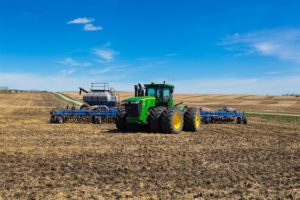 Fertilizer Use
Fertilizer Use
Improved farming practices and the use of fertilizers have helped feed the world while saving habitats that would otherwise be needed for growing food.
If the soil already contains nutrients, why add more?
As plants grow, they draw nutrients from the soil as they take up water. When crops are harvested, nutrients, now contained in the plant, are removed from the soil. The greater the crop yield, the greater the need for more nutrients to be added back into the soil so that the next crop can grow to its full potential.
If nutrients aren’t added back to the soil (whether organic or synthetic), then the soil slowly becomes less fertile. Consequently, crops are less able to compete with weeds and resist plant diseases, insects and drought and that means less food is grown.
The more the better – or not?
More does not mean better! Nutrient application is all about balance. If too many nutrients are added to a crop then there is a risk that crops won’t consume them quickly enough and if there is too much rain, the nutrients can run into the water ways. If there are too few nutrients added, the plants won’t grow to their full potential, resulting in less food being produced.
See Our PDF to Learn More: DownloadPrint
Journey 2050 Lesson: 5
This resource is a great addition to Lesson 5 – Land-Use
SnapAg:
What are GMOs and are they okay to eat? What does organic farming look like? How are animals like chickens or cattle raised?
snapAG is a series of resources that invite students to explore the hot topics affecting the agriculture industry today. Topics range from organics, biotechnology, GMOs, livestock, and more.
Explore what’s trending in agriculture in Canada by browsing the topics here.
Sources available at: https://aitc-canada.ca/en-ca/learn-about-agriculture
snapAg is brought to you by Agriculture in the Classroom Canada and partners.



